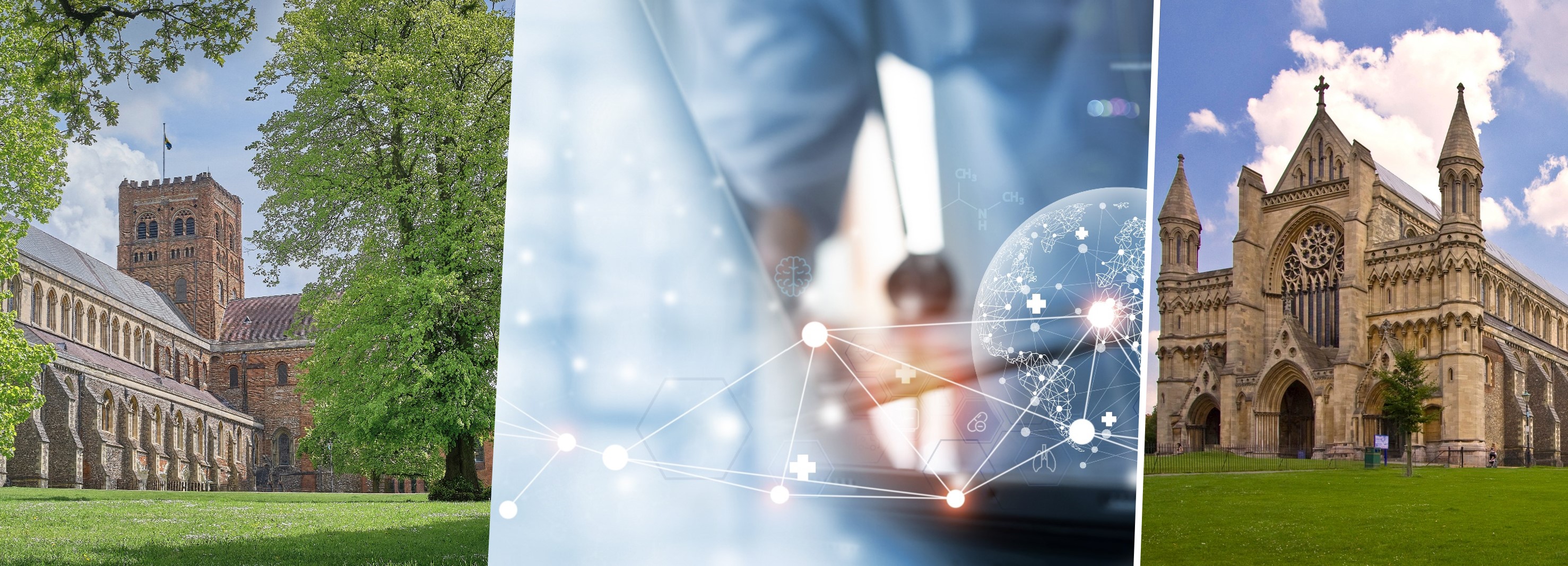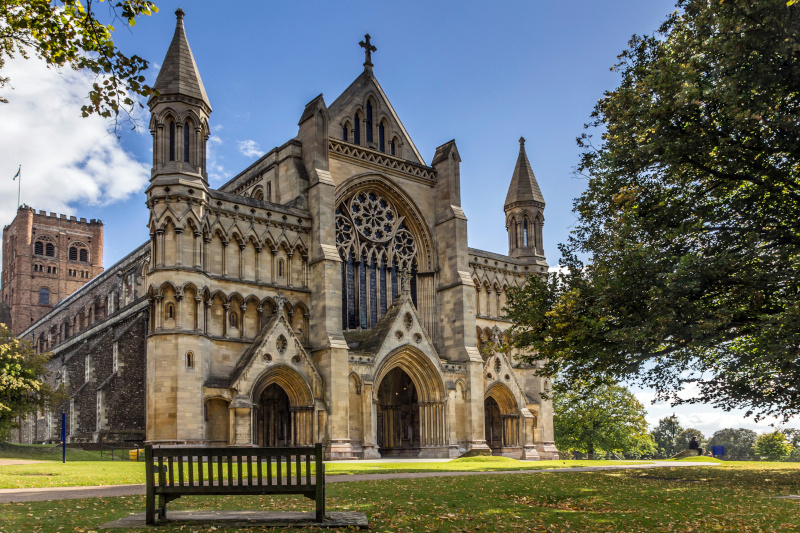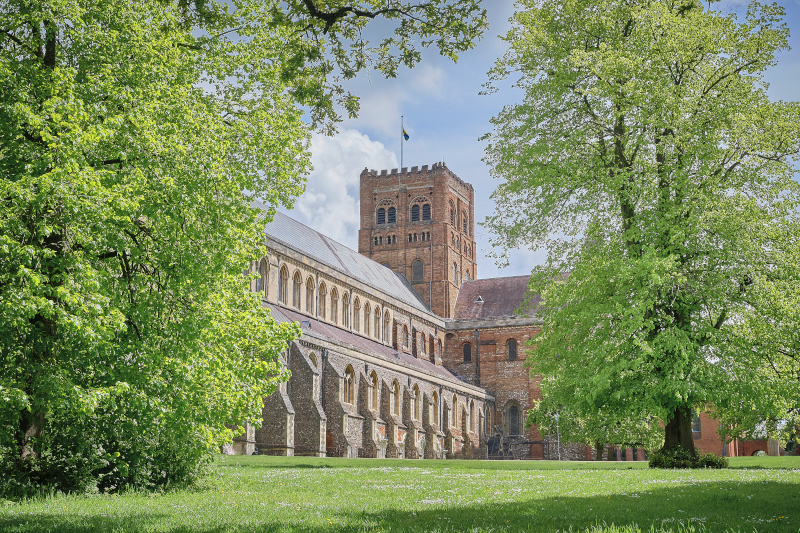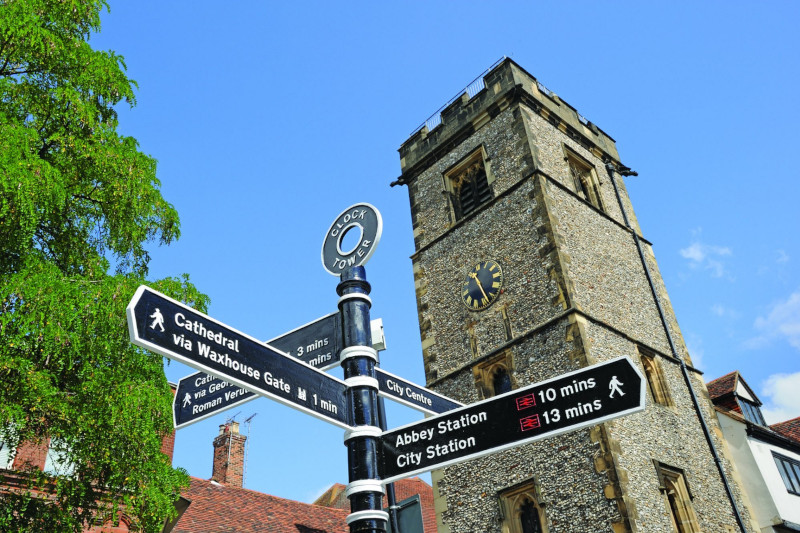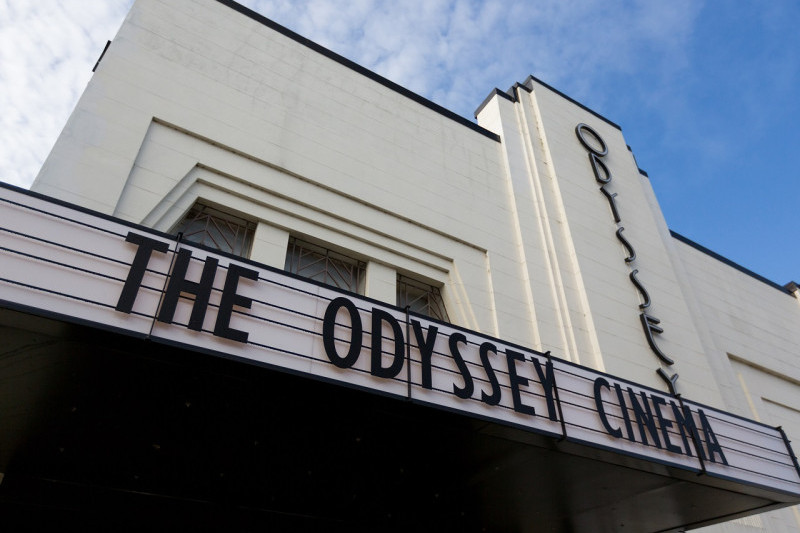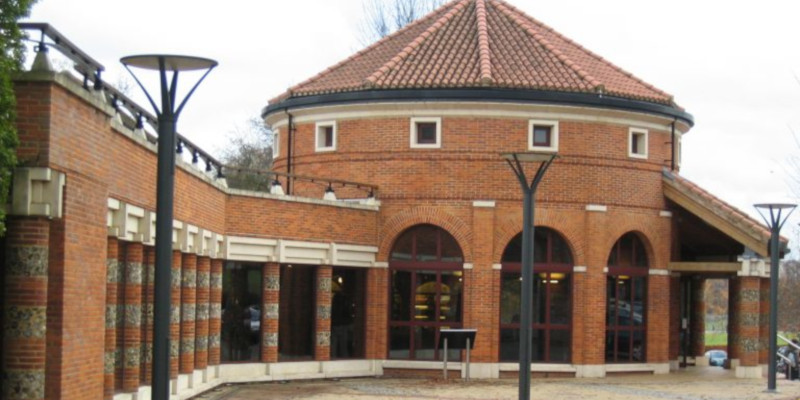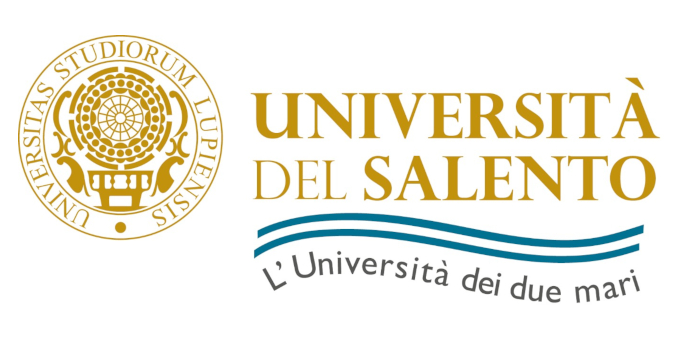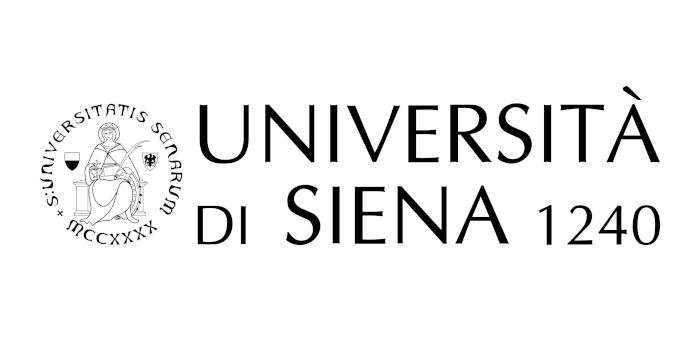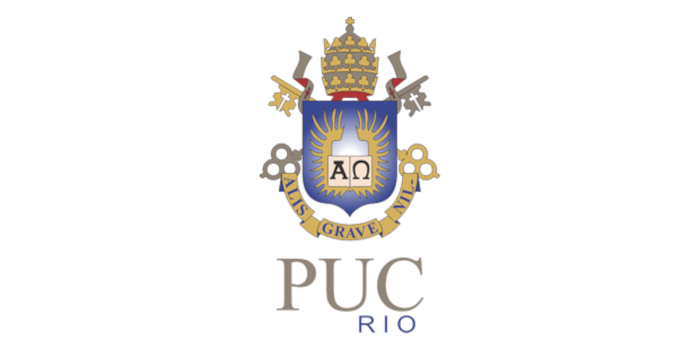St Albans is an English cathedral city to the north of London, in the county of Hertfordshire. Its rich Roman and Medieval history mean it is much more worth a visit than the typical commuter suburb.
St Albans began in the Iron Age as the Catuvellauni settlement of Verlamio, renamed and developed by the Romans as Verulamium. Burned to the ground by the rebellious Iceni princess Boudicca during her rebellion, it was soon rebuilt. Ruins of portions of the Roman wall, the theatre and a hypocaust can be visited today. A resident of Verulamium named Alban became the first British martyr of Christianity, and thus St Albans became an important abbey and monastic centre in the Middle Ages. The cathedral, founded as the Abbey Church of the monastery on the site, was built partially of stones taken from the old Roman town. After the Reformation, St Albans faded from prominence, becoming a typical Home Counties market town. Yet its historical importance was recognised by the state in 1877, when Queen Victoria bestowed city status on the town and cathedral status on the Abbey Church. Today, St Albans is a well-off suburb, with many residents commuting into London.
Why you should visit St Albans?
Quaint Streets, historic buildings and outstanding landmarks jostle for attention with award-winning restaurants, incredible shops and stunning parkland. Old meets new at every turn.
Standing on the former Roman settlement of Verulamium, stunning St Albans Cathedral date to Norman times and was built using Roman bricks. The city is also the home of Britain’s first Saint, Alban, the first battleground in the War of the Roses and has played its part in modern science as the home of philosopher Sir Francis Bacon.
St Albans Cathedral
A fine city abbey church built in 1077 on the site of the shrine of the St Alban - the Roman Soldier who was martyred here because of his faith. His shrine can still be visited in the Cathedral precinct. The Cathedral's architecture is a mixture of periods and partly built from Roman bricks salvaged from the old Roman settlement of Verulamium.
Museum of St Albans
Founded in 1898, this fascinating Museum traces the history of the town from the Roman occupation right up to the present day. Visitors can learn more about the tragic story of St Alban, Britain's first Christian martyr and the Abbey that became his legacy. Exhibits include social history, a medieval gallery, and the Salaman collection of craft tools. A special exhibition gallery hosts a number of changing exhibitions throughout the year. To the rear of the museum is a wildlife garden with a children's trail and picnic area.
Verulamium Museum
On display here are some of the best examples of Roman decorated wall plaster in Britain. Visitors can also view sections of Roman mosaics, magnificent pavements, a painted ceiling with bird images, and many other important artifacts. A model of Verulamium shows how the town would have looked at that time. Other exhibits include jewellery, glass and coins; all discovered during excavations on the site.
St Albans Clock Tower
This early 15th-c curfew tower, which faces the High Street, provides fine views over the city (especially of the abbey) and the surrounding countryside. It is the only medieval curfew tower in the country. A cerfew bell, older than the tower itself, strikes on the hour.

